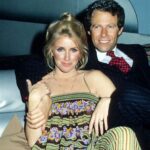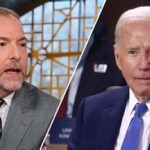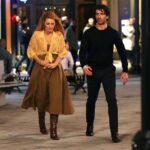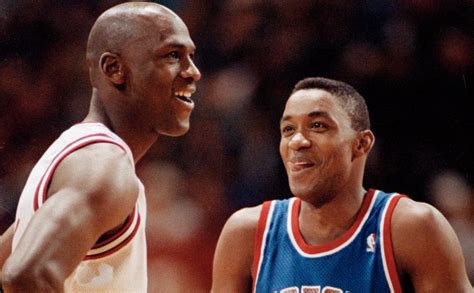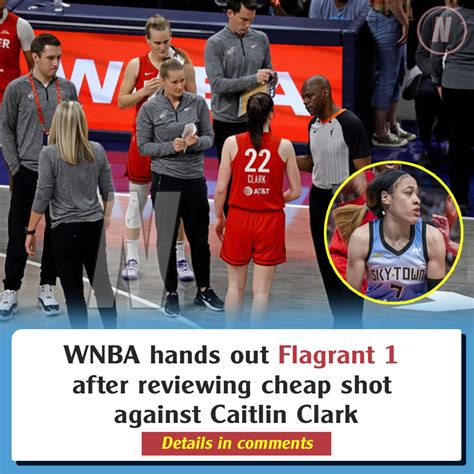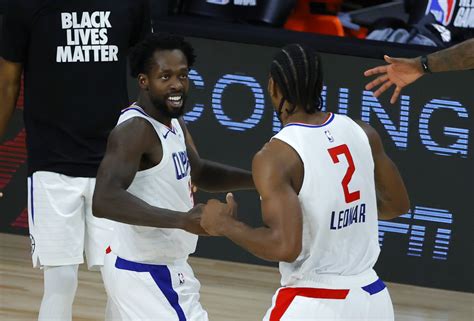
Kawhi Leonard’s reservations about Shai Gilgeous-Alexander’s potential ultimately led the Los Angeles Clippers to trade the young guard, a decision Patrick Beverley believes cost the team a championship, as he stated, “We were almost there, we just needed one more guy.”
Patrick Beverley, never one to shy away from expressing his opinions, recently reignited the debate surrounding the Los Angeles Clippers’ decision to trade Shai Gilgeous-Alexander (SGA) back in 2019. In a recent appearance on a podcast, Beverley suggested that Kawhi Leonard’s perceived lack of faith in the young guard significantly contributed to the Clippers’ front office’s willingness to include SGA in the trade package that landed Paul George. Beverley believes that retaining Gilgeous-Alexander would have been the missing piece to the Clippers’ championship aspirations.
“We were almost there, we just needed one more guy,” Beverley lamented, reflecting on the Clippers’ near-misses in the playoffs during his tenure. He specifically pointed to Leonard’s assessment of Gilgeous-Alexander’s potential as a key factor in the Clippers’ decision-making process. “Kawhi didn’t think he was going to be that good,” Beverley revealed, implying that Leonard’s doubts about SGA’s future ceiling played a crucial role in the Clippers’ willingness to part ways with him.
The trade in question occurred in the summer of 2019 when the Clippers, fresh off acquiring Leonard in free agency, orchestrated a blockbuster deal to bring Paul George from the Oklahoma City Thunder. To acquire George, the Clippers sent a massive haul of assets to Oklahoma City, including Gilgeous-Alexander, Danilo Gallinari, and a multitude of future first-round draft picks and pick swaps. At the time, the trade was widely viewed as a necessary gamble for the Clippers, who were aiming to capitalize on Leonard’s arrival and contend for an NBA title.
However, in hindsight, the trade has been heavily scrutinized, particularly due to Gilgeous-Alexander’s meteoric rise to stardom. Since joining the Thunder, SGA has blossomed into one of the league’s premier players, earning All-NBA honors and leading Oklahoma City to unexpected playoff contention. His exceptional scoring ability, playmaking skills, and defensive versatility have made him a highly coveted player, and many now believe that he would have been an ideal complement to Leonard and George in Los Angeles.
Beverley’s comments underscore the delicate balance that NBA teams must strike when building a championship contender. While acquiring established superstars like Leonard and George often requires making difficult decisions and sacrificing future assets, it’s crucial to accurately assess the potential of young players within the organization. In the Clippers’ case, it appears that their evaluation of Gilgeous-Alexander’s ceiling may have been flawed, ultimately costing them a valuable piece of their championship puzzle.
The Clippers’ decision to trade Gilgeous-Alexander was undoubtedly influenced by a variety of factors, including their desire to appease Leonard, who reportedly preferred to play alongside an established star like George. However, Beverley’s remarks highlight the importance of trusting the development process and recognizing the potential of young talent, even if it requires patience and a willingness to deviate from established plans.
Since the trade, the Clippers have failed to reach the NBA Finals, with injuries and internal chemistry issues often derailing their championship aspirations. Leonard’s own health has been a persistent concern, limiting his availability and hindering the team’s ability to build consistent momentum. Meanwhile, George has been a productive scorer and defender, but he has also struggled with injuries and inconsistency at times.
The Thunder, on the other hand, have benefited immensely from the acquisition of Gilgeous-Alexander, who has become the face of their franchise. Under his leadership, the Thunder have transitioned from a rebuilding team to a legitimate playoff contender, exceeding expectations and establishing themselves as one of the most exciting young teams in the league.
The contrasting trajectories of the Clippers and the Thunder since the 2019 trade serve as a cautionary tale for NBA teams. While the pursuit of established superstars can be tempting, it’s equally important to nurture and develop young talent within the organization. The Clippers’ experience demonstrates the potential consequences of undervaluing a promising player and prioritizing short-term gains over long-term potential.
Beverley’s candor provides a unique perspective on the inner workings of the Clippers during that era. His comments offer insight into the dynamics between players, management, and the decision-making processes that shape a team’s destiny. Whether his assessment of Leonard’s influence is entirely accurate remains a matter of debate, but it undoubtedly adds another layer of complexity to the narrative surrounding the Clippers’ failed championship aspirations.
The ramifications of the Clippers’ decision to trade Gilgeous-Alexander continue to reverberate throughout the league, serving as a constant reminder of the importance of player evaluation and the potential pitfalls of prioritizing immediate gratification over long-term growth. As the Clippers continue their pursuit of a championship, they will undoubtedly be haunted by the ghost of what could have been had they kept faith in the young guard who is now shining brightly in Oklahoma City.
The trade, while initially perceived as a win-now move for the Clippers, has become a symbol of missed opportunity. The Clippers, despite boasting the star power of Leonard and George, have not achieved the ultimate goal. Injuries, chemistry issues, and playoff disappointments have plagued their attempts to reach the NBA Finals. The Thunder, however, have thrived with Gilgeous-Alexander leading the charge. He has transformed into an All-NBA player, guiding the Thunder to unexpected success and establishing them as a team on the rise.
Beverley’s perspective, though potentially biased given his history with the Clippers, offers a valuable glimpse into the team’s internal dynamics and decision-making processes. His assertion that Leonard’s doubt in Gilgeous-Alexander played a significant role in the trade highlights the influence that star players can wield within an organization. It also underscores the importance of accurate player evaluation and the potential consequences of undervaluing young talent.
The Clippers’ pursuit of a championship remains ongoing, but the shadow of the Gilgeous-Alexander trade continues to loom large. It serves as a reminder of the delicate balance between acquiring established stars and nurturing potential within the organization. The Thunder’s success with Gilgeous-Alexander stands in stark contrast to the Clippers’ unfulfilled aspirations, prompting ongoing reflection on what might have been.
Looking back, the Clippers’ decision to trade SGA might have been influenced by several factors, including pressure to win immediately with Kawhi Leonard, who was on a short-term deal, and the perceived need for an established star to complement Leonard’s game. However, the move also highlights the risks associated with prioritizing short-term gains over long-term potential.
The situation also underscores the significance of team chemistry and player development. While acquiring stars like Leonard and George undoubtedly elevates a team’s potential, it’s equally crucial to foster a supportive environment where young players can thrive and reach their full potential. The Thunder’s success with Gilgeous-Alexander is a testament to their ability to identify and nurture talent, creating a winning culture that empowers players to excel.
Moreover, Beverley’s remarks raise questions about the role of player input in team decisions. While it’s common for star players to have a voice in personnel matters, it’s essential for management to strike a balance between accommodating player preferences and making sound, objective decisions based on long-term team goals.
The Clippers’ experience serves as a valuable lesson for other NBA teams. It highlights the importance of careful player evaluation, patient development, and a balanced approach to team building. While the allure of acquiring established stars is undeniable, teams must also recognize and nurture the potential within their own ranks.
In conclusion, Patrick Beverley’s comments shed light on a pivotal moment in Clippers history. The decision to trade Shai Gilgeous-Alexander, allegedly influenced by Kawhi Leonard’s doubts, continues to be a subject of debate and regret. The Clippers’ failure to achieve their championship aspirations, coupled with the Thunder’s success with Gilgeous-Alexander, underscores the importance of accurate player evaluation and the potential consequences of prioritizing short-term gains over long-term growth. The trade remains a cautionary tale for NBA teams, highlighting the delicate balance between acquiring established stars and nurturing the potential within their own organizations.
The Clippers have since attempted to retool and address their needs through other acquisitions and draft picks. However, the absence of a player with Gilgeous-Alexander’s unique skillset and potential remains a significant void. The Thunder, on the other hand, have built a formidable team around Gilgeous-Alexander, positioning themselves as a contender in the Western Conference.
The narrative surrounding the trade continues to evolve as both teams navigate their respective paths. The Clippers remain determined to compete for a championship, while the Thunder aim to establish themselves as a perennial contender. The legacy of the Gilgeous-Alexander trade will undoubtedly be a part of their stories for years to come.
Beverley’s remarks also bring to the forefront the human element of professional sports. Decisions made by players and management can have lasting impacts on careers and team dynamics. The Clippers’ decision to trade Gilgeous-Alexander not only affected the trajectories of the team and the player but also created a ripple effect throughout the league.
The Clippers’ situation highlights the inherent risks in building a team around superstars, especially when those stars are on short-term contracts or have a history of injuries. While acquiring top-tier talent can significantly improve a team’s chances of winning, it also comes with the pressure to win immediately, potentially leading to short-sighted decisions.
The Clippers, led by coach Tyronn Lue, have continued to search for the right formula to unlock their championship potential. However, injuries to key players, including Leonard and George, have consistently hampered their efforts. The team’s inability to stay healthy and build consistent momentum has been a major obstacle in their pursuit of a title.
The Thunder, under the guidance of general manager Sam Presti, have executed a remarkable rebuild, transforming a team that was once considered a lottery mainstay into a legitimate playoff contender. Presti’s ability to identify and develop talent, coupled with his willingness to make bold trades, has been instrumental in the Thunder’s resurgence.
The Clippers’ experience serves as a reminder that building a championship team requires more than just star power. It also requires strong leadership, effective coaching, and a cohesive team culture. The Thunder’s success demonstrates the importance of these factors, as they have cultivated a winning environment where players are empowered to reach their full potential.
The Clippers’ and Thunder’s contrasting trajectories since the trade have sparked numerous debates among fans and analysts. Some argue that the Clippers made the right decision by prioritizing immediate contention, while others contend that they made a mistake by undervaluing Gilgeous-Alexander’s potential. The debate is likely to continue for years to come, as both teams continue to pursue their respective goals.
The Clippers’ journey to a championship remains an ongoing pursuit, marked by both successes and setbacks. The team’s ownership and management are committed to providing the resources and support necessary to compete at the highest level. However, the challenges they face are formidable, including navigating the competitive landscape of the Western Conference and overcoming the obstacles posed by injuries and internal dynamics.
The Thunder’s rise to prominence has been a testament to their strategic planning, player development, and organizational culture. The team’s commitment to building from within, rather than relying solely on free agency or trades, has paid dividends. Gilgeous-Alexander’s emergence as a superstar has been the cornerstone of their success, and the Thunder are well-positioned to contend for championships in the years to come.
Beverley’s candid remarks have reignited the conversation surrounding the Clippers’ decision to trade Gilgeous-Alexander. His perspective offers valuable insight into the team’s internal dynamics and decision-making processes. While his assessment of Leonard’s influence may be subjective, it adds another layer of complexity to the narrative surrounding the Clippers’ failed championship aspirations.
The Clippers and Thunder continue on their separate paths, each striving for ultimate success. The legacy of the Gilgeous-Alexander trade is a constant reminder of the high stakes and difficult choices that teams face in their pursuit of a championship. The story of these two franchises serves as a valuable lesson for other NBA teams, highlighting the importance of careful player evaluation, patient development, and a balanced approach to team building.
The Clippers’ initial justification for the trade, to pair Kawhi Leonard with another star in Paul George and immediately compete for a title, hasn’t materialized into the expected success. This outcome amplifies the scrutiny on the decision to include Gilgeous-Alexander in the deal. The pressure to win immediately, fueled by Leonard’s arrival, might have clouded the team’s judgment regarding the long-term value of SGA.
Conversely, the Thunder’s patient approach, centered around building through the draft and developing young talent like Gilgeous-Alexander, has positioned them for sustained success. Their ability to recognize and nurture his potential has been a key factor in their resurgence. This contrast highlights the different philosophies teams employ in their quest for a championship and the potential consequences of each approach.
Beverley’s comments also raise questions about the Clippers’ organizational structure and the level of communication and collaboration between players, coaches, and management. A disconnect in these areas could have contributed to the misjudgment of Gilgeous-Alexander’s potential and the subsequent decision to trade him.
The trade underscores the importance of considering not only a player’s current abilities but also their potential for growth and development. The Clippers might have underestimated Gilgeous-Alexander’s capacity to evolve into a star player, focusing instead on acquiring an established name in Paul George.
The situation serves as a reminder that building a successful NBA team is a complex and multifaceted process. There is no one-size-fits-all formula, and teams must adapt their strategies based on their unique circumstances and resources. The Clippers’ and Thunder’s experiences highlight the importance of striking a balance between acquiring established stars and nurturing young talent, fostering a strong team culture, and making informed decisions based on careful player evaluation.
The repercussions of the Clippers’ decision continue to resonate throughout the NBA, serving as a case study for other teams facing similar choices. The league’s landscape is constantly evolving, and teams must remain vigilant in their efforts to identify and develop talent, adapt to changing trends, and make strategic decisions that position them for long-term success.
The story of the Clippers and Thunder is a testament to the dynamic nature of the NBA and the ever-present pursuit of a championship. Both teams continue to navigate their respective paths, learning from their experiences and striving to achieve their ultimate goals. The legacy of the Gilgeous-Alexander trade will undoubtedly remain a significant part of their narratives for years to come.
Frequently Asked Questions (FAQ)
1. Why did the Los Angeles Clippers trade Shai Gilgeous-Alexander?
The Clippers traded Shai Gilgeous-Alexander, along with other assets, to the Oklahoma City Thunder in 2019 to acquire Paul George. The move was intended to pair George with Kawhi Leonard, who had just signed with the Clippers, to immediately contend for an NBA championship.
2. What role did Kawhi Leonard play in the Clippers’ decision to trade Shai Gilgeous-Alexander?
According to Patrick Beverley, Kawhi Leonard’s doubt about Shai Gilgeous-Alexander’s potential influenced the Clippers’ decision to include him in the trade package for Paul George. Beverley stated that Leonard “didn’t think he was going to be that good.”
3. How has Shai Gilgeous-Alexander performed since being traded to the Oklahoma City Thunder?
Since joining the Thunder, Shai Gilgeous-Alexander has developed into a star player, earning All-NBA honors and leading the Thunder to unexpected playoff contention. He has become the face of the franchise and is considered one of the league’s premier players.
4. Have the Los Angeles Clippers achieved their goal of winning a championship since trading for Paul George?
No, the Clippers have not reached the NBA Finals since trading for Paul George. Injuries to key players, including Kawhi Leonard and Paul George, and internal chemistry issues have hindered their championship aspirations.
5. What is Patrick Beverley’s opinion on the Clippers’ decision to trade Shai Gilgeous-Alexander?
Patrick Beverley believes that the Clippers made a mistake by trading Shai Gilgeous-Alexander. He stated, “We were almost there, we just needed one more guy,” implying that retaining Gilgeous-Alexander would have been the missing piece to the Clippers’ championship puzzle.



